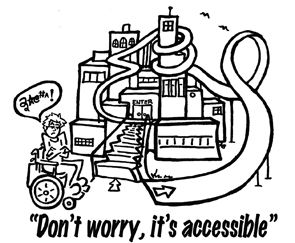What do we need to champion now for the future? Will our teams change? Will the ACR and AF need to rejoin forces to be a more effective voice for doctor and patient together?
As you reflect on these stories and similar ones from your current day, think of your rheumatology model of care and if/how you see it evolving. Might the following ideas be found in your future rheumatology care model?
- Care contacts that move away from physician office schedules to on-demand care at their place of work or via the Internet;
- Care management that tracks patient performance and facilitates movement along a comprehensive, personalized care plan;
- Individualized programs that support your patients’ emotional, physical, social and spiritual concerns and conditions;
- Care extenders that reach out to individuals at risk of musculoskeletal morbidity; and
- New care strategies that reduce costs.
What Is the Current Rheumatology Care Model?
Rheumatologists work in a variety of settings, such as solo, single-specialty group and multi-specialty group practices. However, common characteristics of rheumatologists and our practices do exist.
We are a patient-centered specialty. We take care of complex patients with multiple symptoms and multiple-organ involvement that dramatically affect their lives. Few algorithms exist for integrating all the factors we use to make care decisions. I was once told that a rheumatologist knows when he/she has trained successfully when they can look patients in the eye all day long and comfortably say, “I don’t know.”

We are mostly a referral specialty, with our patient population defined by referring providers and our clinical interests and availability. For years, a rheumatology badge of honor has been how much we are needed, symbolized by our long new-patient wait times. Given these access/demand issues, some practices have closed to patients with fibromyalgia or chronic fatigue—or limited the number of such patients they will see. There are few financial or system incentives to see complex, time-consuming patients, although they are common in most practices. Even for classic inflammatory disease patients, there are frequent delays between onsets of symptoms and treatment initiation.4
Pain management is part of rheumatology care, but there is wide variation in how often opioids are prescribed, behavioral care is offered and self-management coached. Localized musculoskeletal problems, even when there is joint swelling and signs of inflammation, commonly are first seen by orthopedists due to PCP referral patterns and lack of rheumatology availability.
Businesses are demanding greater value for their healthcare expenditures, in ways that will help employees be healthier & more productive, & miss work less often.
Infusion-therapy units are now common components of rheumatology practices because they offer patients convenience, rheumatologist oversight and a profitable ancillary service line. Pharmaceutical companies have a high profile in many offices by supporting the preauthorization coordinator, the nurse educators and the samples program. Many practices offer pharmaceutical research studies, and many clinicians take part in company advisory panels or speaking bureaus.

